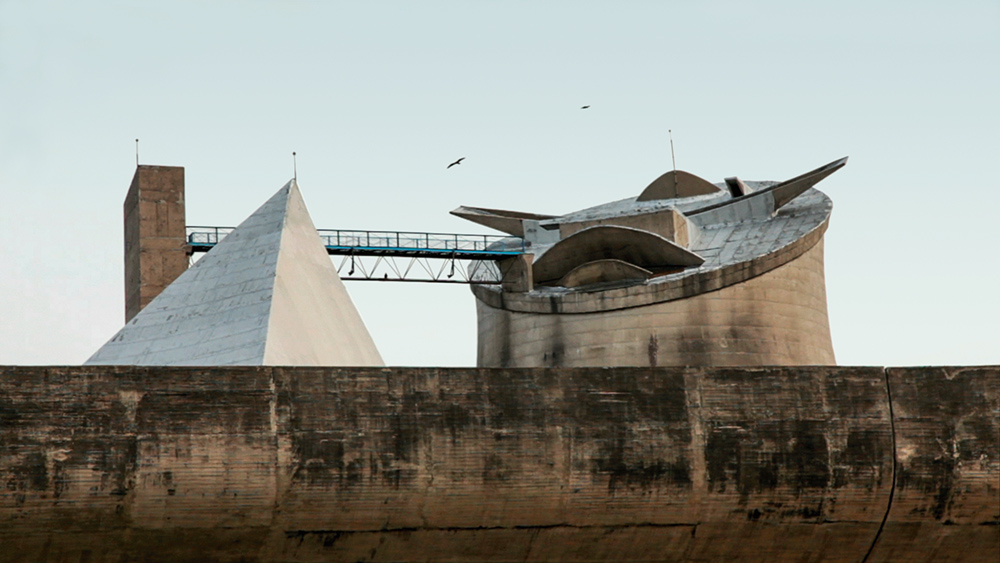







THE CITY BEAUTIFUL
2011
Full HD video | 16:9 | 21 min. | color | sound
60 years ago, the city of Chandigarh in northern India, designed by Le Corbusier, was built to demonstrate India’s striving for modernity. Although it has often been criticized internationally for owing too much to Western ideals of progress, Chandigarh enjoys the reputation with many Indians of being the country’s most beautiful city, which is also reflected in its epithet, “The City Beautiful”. Monumental, expressive ensembles of rough, exposed concrete, with powerful forms and three-dimensionally modelled facades were constructed in Chandigarh.
The buildings seem to defy any decay; nature alone is beginning to grow gradually over unused areas of the site, quietly withholding them from the human eye. Over the decades, a certain acquisition of modernity has taken place among the residents of Chandigarh, and the prescribed structure of alien, imported architecture has been adapted by the local culture.
The film The City Beautiful does not show criticism of the utopian standpoints of modernism and its imperialist visions, but rather a documentary stocktaking before the backdrop of a realized vision of strict geometrical order and its overlapping with the fluid dynamics of an everyday Asian culture.
Concept / Camera / Edited: Kay Walkowiak
Postproduction: Manuel Hartmann
Production Assistant: Barbara Probst
Supported by: Tiroler Künstlerschaft, Federal Chancellery of Austria
The buildings seem to defy any decay; nature alone is beginning to grow gradually over unused areas of the site, quietly withholding them from the human eye. Over the decades, a certain acquisition of modernity has taken place among the residents of Chandigarh, and the prescribed structure of alien, imported architecture has been adapted by the local culture.
The film The City Beautiful does not show criticism of the utopian standpoints of modernism and its imperialist visions, but rather a documentary stocktaking before the backdrop of a realized vision of strict geometrical order and its overlapping with the fluid dynamics of an everyday Asian culture.
Concept / Camera / Edited: Kay Walkowiak
Postproduction: Manuel Hartmann
Production Assistant: Barbara Probst
Supported by: Tiroler Künstlerschaft, Federal Chancellery of Austria








BODY OF CONCRETE
2014
Full HD video | 16:9 | 8.26 min. | color | sound
An expression of Le Corbusier’s quest for perfection in form, the Indian city of Chandigarh is an uncompromising vision realized in concrete. Planning a project explicitly intended to produce a different society, the architect deliberately disregarded the cultural context and local setting. The city was to provide its residents with optimum spaces for living and working and moreover neutralize the entrenched Indian caste system. Le Corbusier’s focus, in other words, was on a basic functional classification of people, reflected by his anthropomorphic conception of the city as a human organism.
The film Body of Concrete, the second part of the Chandigarh trilogy, takes a cautious approach to this vision of an architecture that in its day was more than merely space surrounded by built elements. In the perspective of today’s postcolonial critique, the city is regarded as a failure, and its body cast in concrete appears in dystopian discoloration: the material—once upon a time the epitome of modernity—that was used to make one of the twentieth century’s most imposing urban planning projects a reality has become brittle after decades of monsoon rains, its surfaces blackened, its ideological luster dulled.
Concept / Camera / Edited: Kay Walkowiak
Postproduction: Stefan Haselgruber
Production Assistant: Barbara Probst
Supported by: Federal Chancellery of Austria, Federal State of Salzburg, City of Vienna
The film Body of Concrete, the second part of the Chandigarh trilogy, takes a cautious approach to this vision of an architecture that in its day was more than merely space surrounded by built elements. In the perspective of today’s postcolonial critique, the city is regarded as a failure, and its body cast in concrete appears in dystopian discoloration: the material—once upon a time the epitome of modernity—that was used to make one of the twentieth century’s most imposing urban planning projects a reality has become brittle after decades of monsoon rains, its surfaces blackened, its ideological luster dulled.
Concept / Camera / Edited: Kay Walkowiak
Postproduction: Stefan Haselgruber
Production Assistant: Barbara Probst
Supported by: Federal Chancellery of Austria, Federal State of Salzburg, City of Vienna
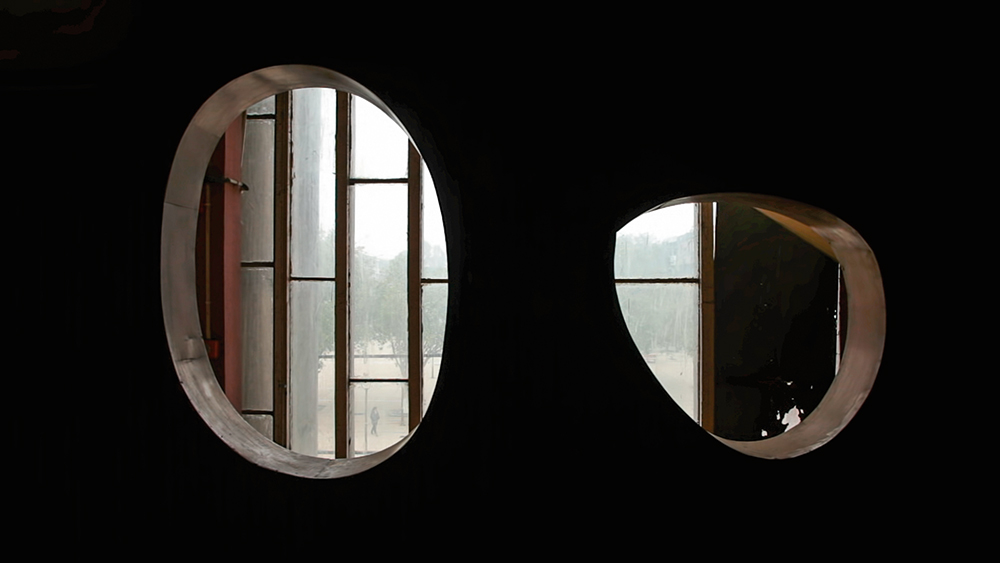
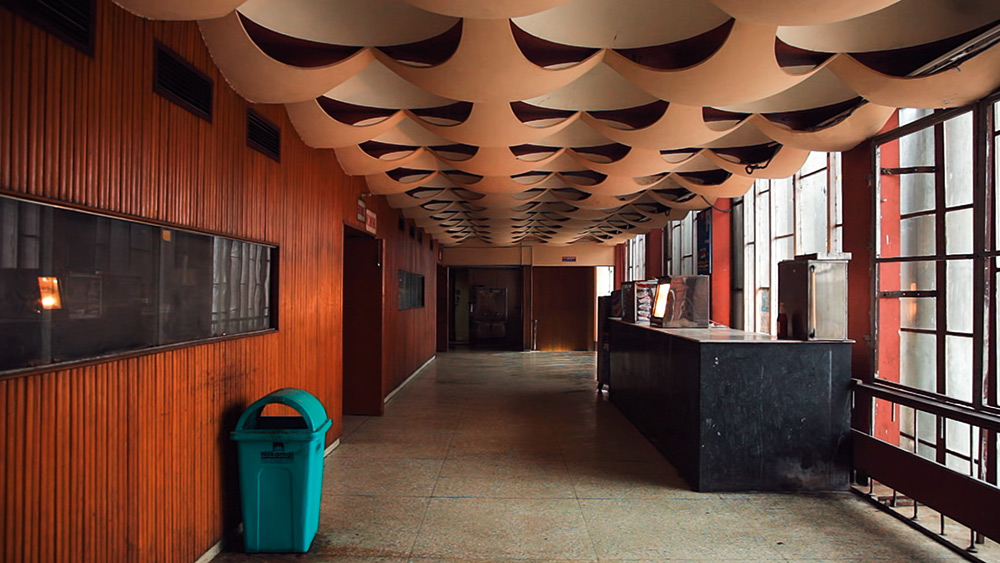
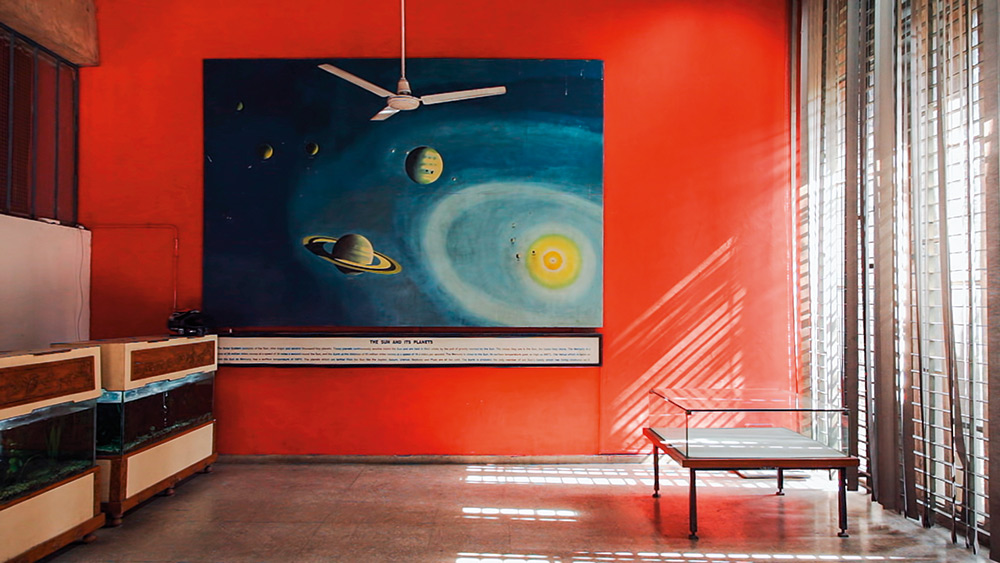
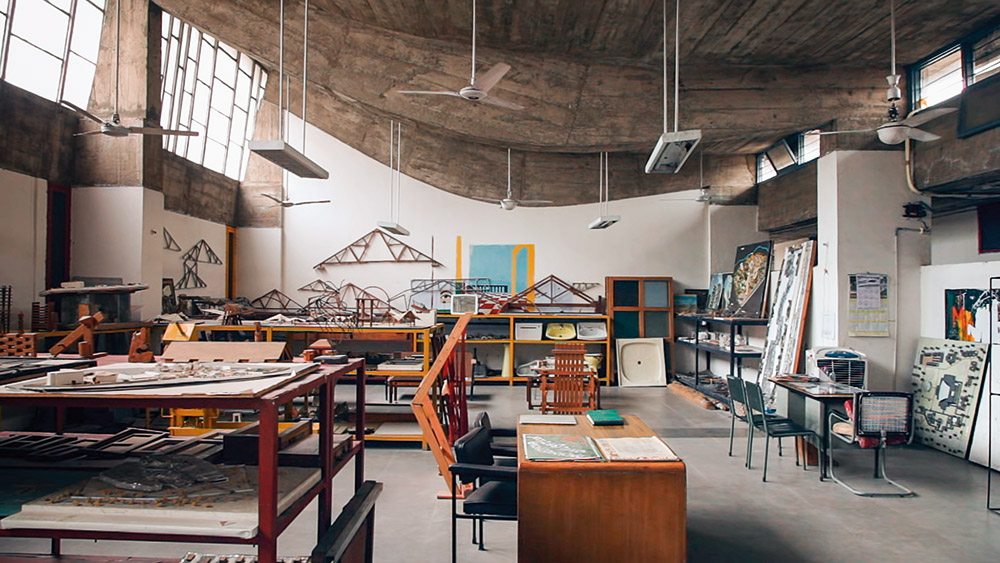
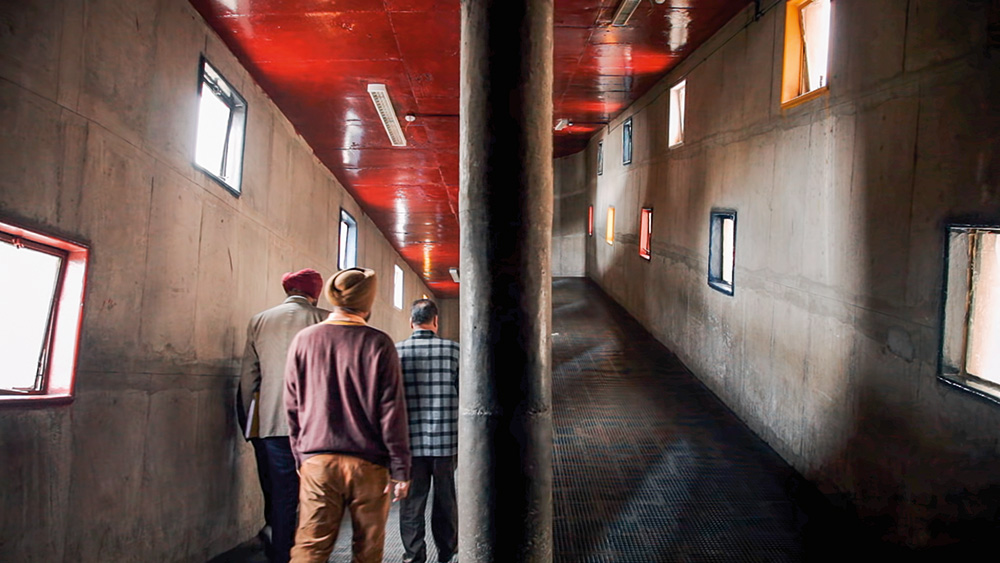
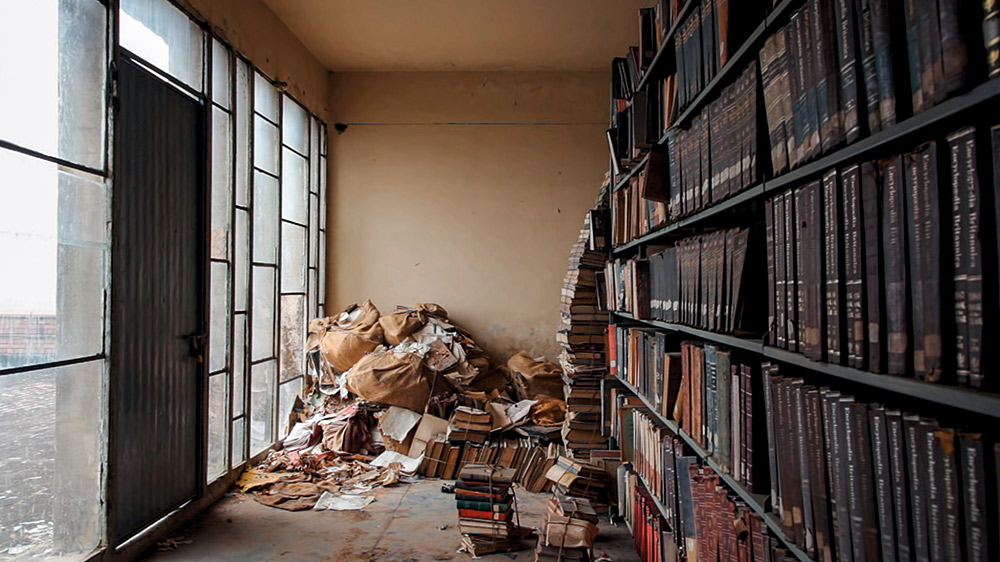
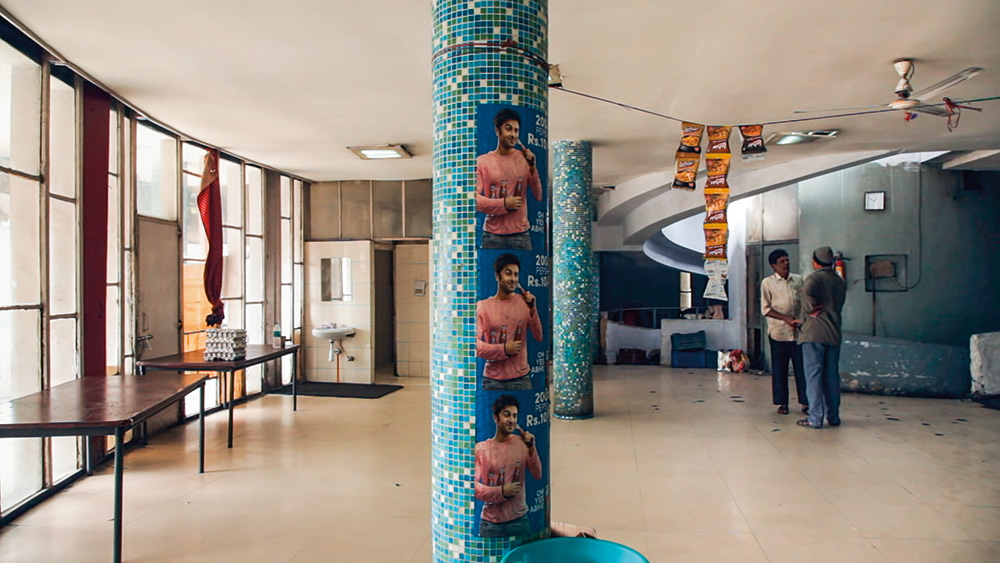

MODULOR
2015
Full HD video | 16:9 | 14 min. | color | sound
Modulor is the third part of the film trilogy examining Chandigarh, the utopian modernist planned city in northern India built under Le Corbusier’s direction in the 1950s, and its contemporary transformation.
Exploring the tensions between the raw materiality of modernist architecture and Le Corbusier’s anthropometric system of proportions, the ten-minute film scrutinizes interiors based on ideal proportions with a view to the possibilities they offer the residents who fill the city’s mathematical order with life and the constraints they impose.
Appropriation by the living has furnished the city’s concrete body with organs. In the interiors in particular, where enforcement of the rules established to preserve Le Corbusier’s architectonic legacy is spotty, another world unfolds, one that has managed to wrest humble domestic comforts from the inward-folded exterior space of architecture.
Concept / Camera / Edited: Kay Walkowiak
Postproduction: Stefan Haselgruber
Production Assistant: Tejinder Ahuja
Special Thanks: Austrian Cultural Forum New Delhi
Supported by: Federal Chancellery of Austria
Exploring the tensions between the raw materiality of modernist architecture and Le Corbusier’s anthropometric system of proportions, the ten-minute film scrutinizes interiors based on ideal proportions with a view to the possibilities they offer the residents who fill the city’s mathematical order with life and the constraints they impose.
Appropriation by the living has furnished the city’s concrete body with organs. In the interiors in particular, where enforcement of the rules established to preserve Le Corbusier’s architectonic legacy is spotty, another world unfolds, one that has managed to wrest humble domestic comforts from the inward-folded exterior space of architecture.
Concept / Camera / Edited: Kay Walkowiak
Postproduction: Stefan Haselgruber
Production Assistant: Tejinder Ahuja
Special Thanks: Austrian Cultural Forum New Delhi
Supported by: Federal Chancellery of Austria